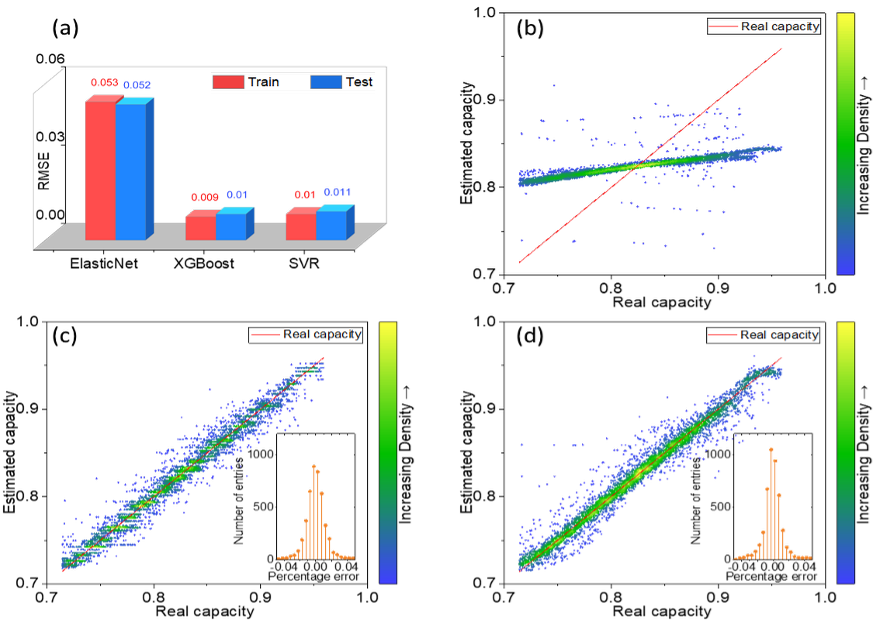
Data-driven capacity estimation of commercial lithium-ion batteries from voltage relaxation
(Article was selected as one of Editors' Highlights in section Energy:
https://www.nature.com/collections/dmmhtcypsc)
Accurate capacity estimation is crucial for the reliable and safe operation of lithium-ion Batteries. Researchers from Tongji University and KIT in cooperation with other institutes have investigated the possibility to use relaxation voltage curves of commercial cells to estimate the capacity. This way no additional cycling information and no complete charge/discharge cycle is required to determine the residual capacity. Statistical features derived from relaxation curves were compared with three different models and then used to estimate residual capacity of the cells.
Zu dem Artikel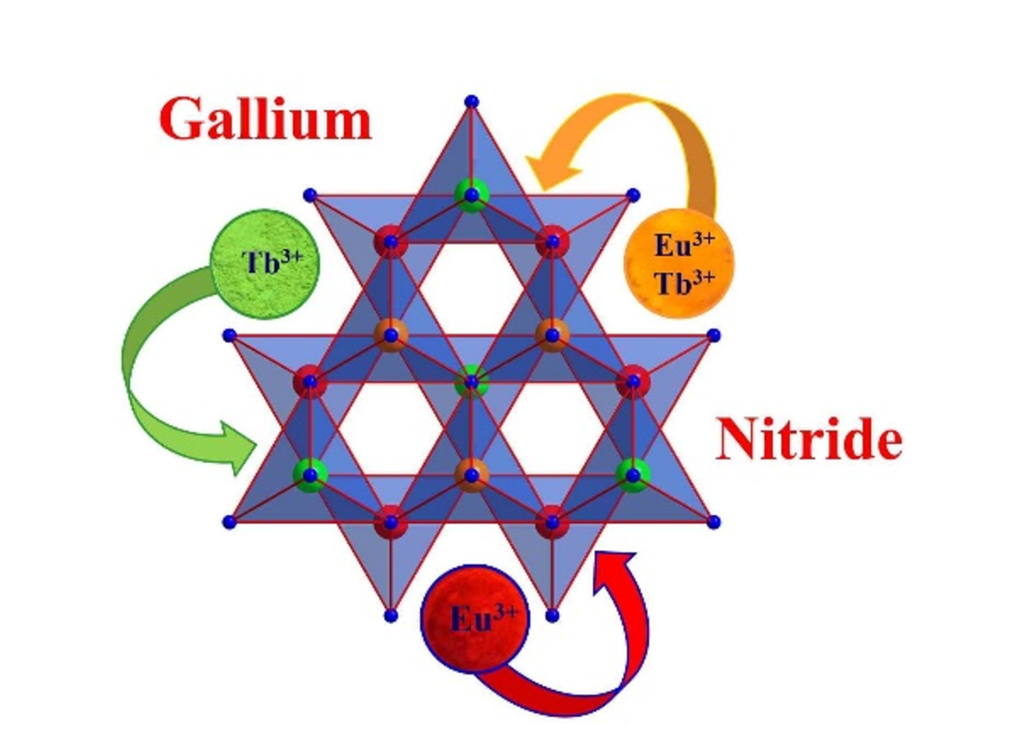
Closing the yellow gap with Eu- and Tb‑doped GaN: one luminescent host resulting in three colours
The invention of highly efficient blue-emitting diodes was a milestone for the development of today's omnipresent white LEDs being enabled by the investigations of Nakamura et al., who were awarded the Nobel prize in 2014. Here we demonstrate the doping of bulk GaN with europium, terbium and the combination of both resulting in intriguing luminescence properties, pushing the role of GaN:Eu,Tb as a chief component in future light emitting diodes. This colour tuning proves that one luminescence host can provide three colours (red, green and orange) and that even the so called “yellow gap” could be closed with a III-nitride.
Artikel aufrufen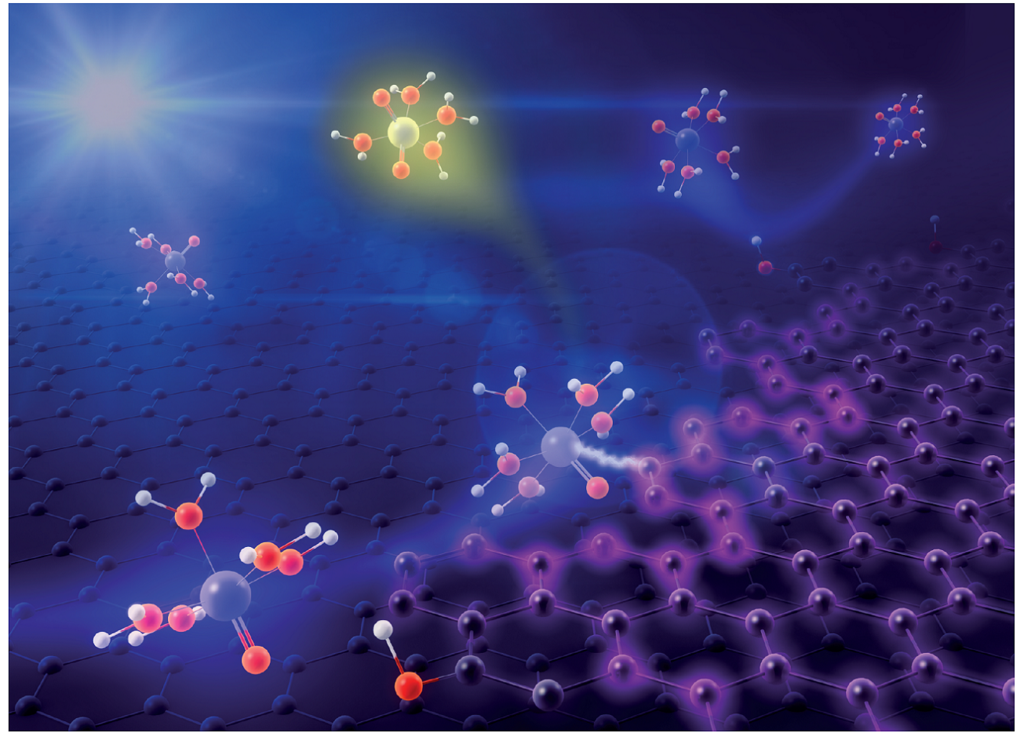
Origin of the catalytic activity at graphite electrodes in vanadium flow batteries
It is shown that graphitic defects and not oxygen functional groups are responsible for lowering the activation energy barrier for the charge transfer process in vanadium flow batteries by thermal deoxygenation of graphite felt electrodes. These electrodes show superior cycling performance and stability.
Artikel aufrufen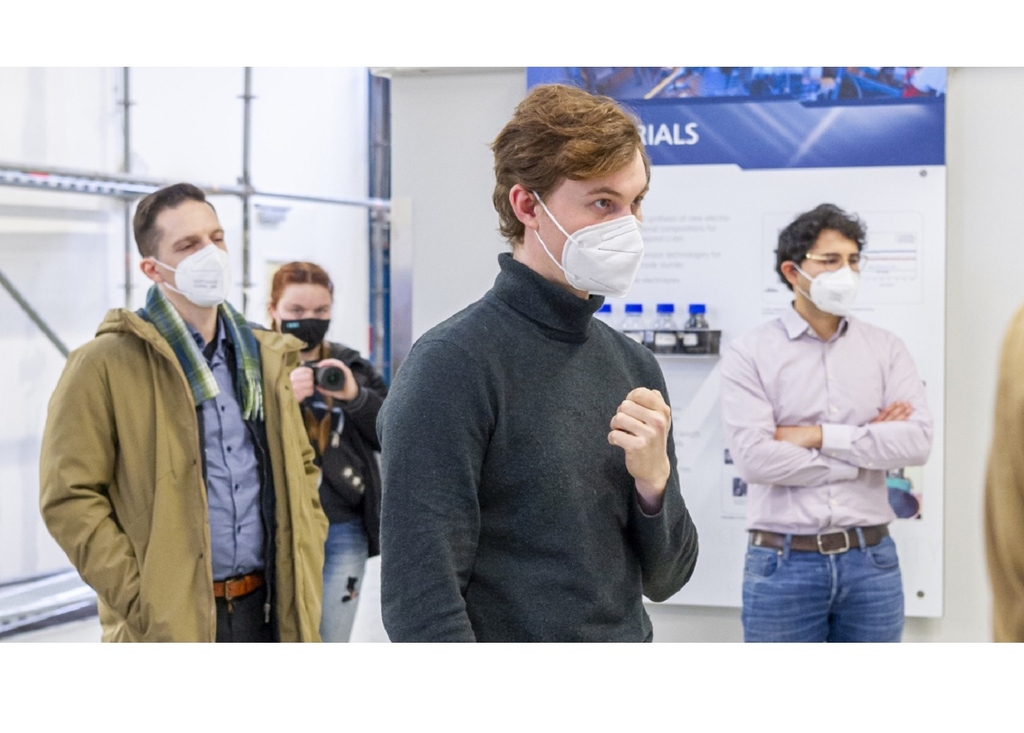
Der Europaabgeordnete der Grünen, Malte Gallée, informierte sich am KIT über die Forschung zur Lithiumförderung aus Thermalwässern sowie über aktuelle Entwicklungen in der Batterieforschung (2022/02)
Mehr ...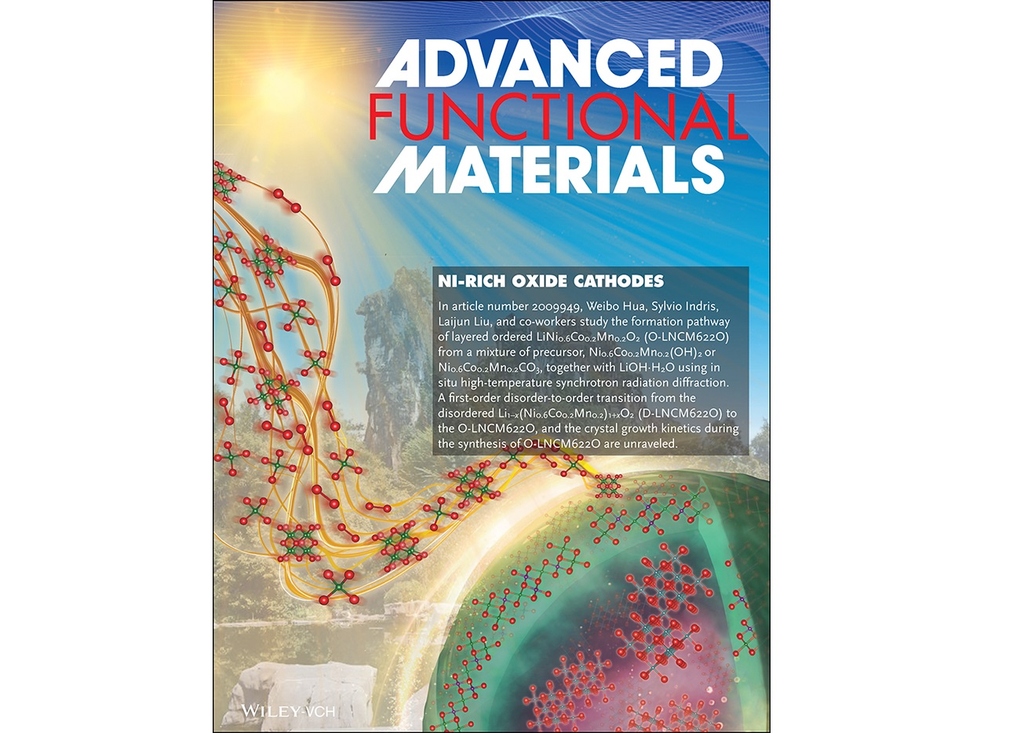
In this study Kinetic Control of Long-Range Cationic Ordering in the Synthesis of Layered Ni-Rich Oxides published in Advanced Functional Materials, we show the synthesis optimization of NCM622 cathode material for Lithium-ion batteries, achieving both lower energy capacity cost and high cyclability. The results can be applied to production of better Li-ion batteries for modern electronics.
Introduction to the research by ALBA Synchrotron
Artikel aufrufen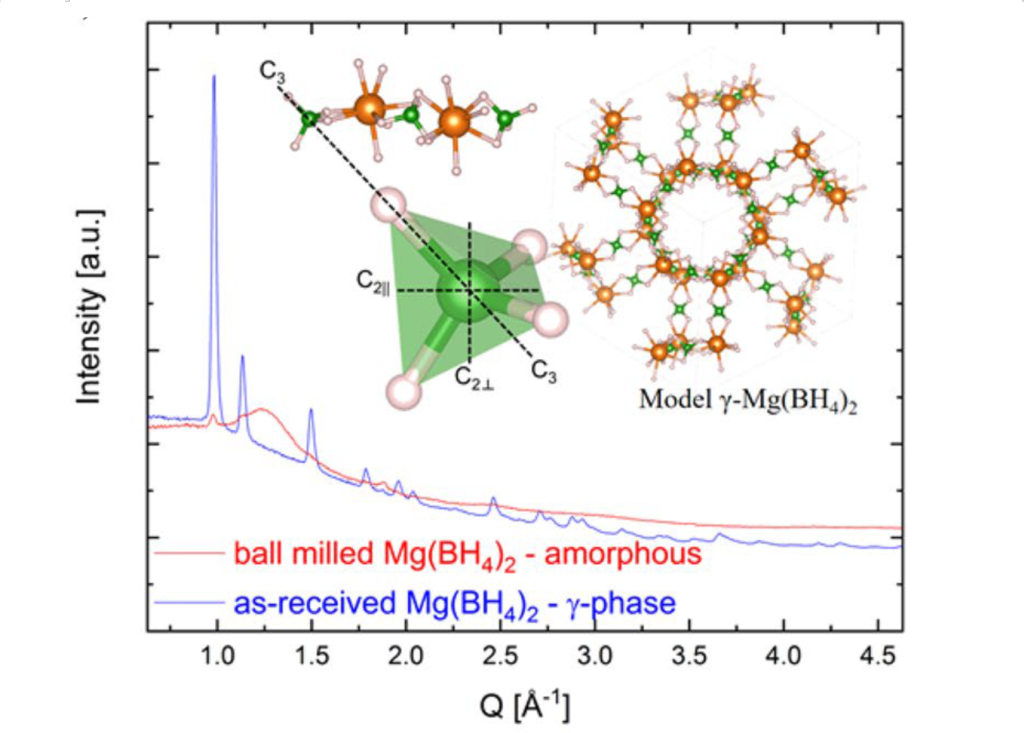
“Dynamics of porous and amorphous magnesium borohydride to understand solid state Mg-ion conductors”
A comprehensive study combining x-ray total scattering and quasi elastic neutron scattering (QENS) to help unravelling the complex interplay of the structure-property-relationship in crystalline and amorphous Mg-ion conductor Mg(BH4)2. In this study, published in June 2020 in scientific reports – nature research, electrochemical impedance spectroscopy of crystalline and amorphous Mg(BH4)2 confirmed that the conductivity of the latter is ~2 orders of magnitude higher at 353 K. The challenge in understanding the root cause of the observed high conductivity, is the difficulty to determine the structure of amorphous glasses in general. Since glasses are x-ray amorphous, synchrotron total scattering was performed to calculate the corresponding pair distribution functions (PDF). PDF analyses indicate a higher amount of disorder regarding the [BH4]- tetrahedra as well as the preservation of a now highly disordered 3D net of interpenetrating channels. Additionally, QENS was employed to study the rotational mobility of the [BH4] units, proofing a much larger fraction of activated [BH4] rotations in amorphous Mg(BH4)2.
To the text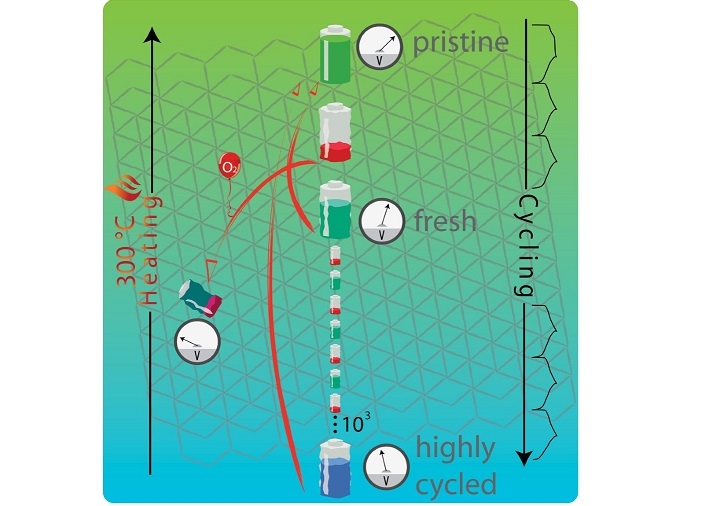
In this article published in Chemistry of Materials the authors describe a gradual transformation from a trigonal layered structure toward a cubic spinel structure during electrochemical cycling results in an unwanted decay of the mean charge and discharge voltages, called “voltage fade”. A structural reordering was induced by a mild thermal treatment in lithiated as well as in delithiated electrodes, which results either in a partial recovery of the initial well-ordered state or in an intensification of the structural degradation toward a spinel-type cation ordering, respectively.
To the text
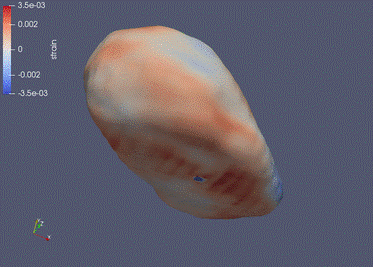
“Structural insights into the formation and voltage degradation of lithium- and manganese-rich layered oxides”
Top 50 Chemistry and Materials Sciences Articles in Nature Communications: https://www.nature.com/collections/giacagiacaAlthough high-energy lithium- and manganese-rich layered cathode materials can deliver 30 % excess capacity compared with today’s commercially used cathodes, the so-called voltage decay has been restricting their practical application. Here, we have investigated systematically the structural and compositional dependence of manganese-rich lithium insertion compounds on the lithium content provided during synthesis and the complexity in the synthesis pathways of layered Li[Li0.2Ni0.2Mn0.6]O2 oxide. The transformation of the lithium-rich layered phase to a lithium-poor spinel phase via an intermediate lithium-containing rock-salt phase with release of lithium/oxygen was discovered during ultra-long-term cycling.
Nat. Commun. 10, 5365 (2019)
To the text
“Probing a battery electrolyte drop with ambient pressure photoelectron spectroscopy”
Operando ambient pressure photoelectron spectroscopy in realistic battery environments is a key development towards probing the functionality of the electrode/electrolyte interface in lithium-ion batteries that is not possible with conventional photoelectron spectroscopy. Here, we present the ambient pressure photoelectron spectroscopy characterization of a model electrolyte based on 1M bis(trifluoromethane)sulfonimide lithium salt in propylene carbonate. Our article provides insights into the liquid components of a lithium ion battery and the necessity to stabilize the liquid phases in ambient pressure photoelectron spectroscopy measurements.
Zu dem Artikel
“NASICON-type air-stable and all-climate cathode for sodium-ion batteries with low cost and high-power density”
The development of low-cost and long-lasting all-climate cathode materials for sodium ion batteries is one of the key issues for the success of large-scale energy storage. Here, we synthesize a NASICON-type tuneable Na4Fe3(PO4)2(P2O7)/C nanocomposite which shows both excellent rate performance and outstanding cycling stability over more than 4400 cycles. Its air stability and all-climate properties are investigated, and its potential as the sodium host in full cells has been studied.
NASICON-Type Air-Stable and All-Climate Cathode for Sodium-Ion Batteries with Low Cost and High-Power Density
Zu dem ArtikelIn der gemeinsam von KIT und Universität Ulm getragenen Initiative „Energy Storage Beyond Lithium“ arbeiten Wissenschaftlerinnen und Wissenschaftler aus Elektrochemie, Materialwissenschaften, theoretischer Modellierung und Ingenieurwissenschaften in einem multidisziplinären Ansatz zusammen.
Mehr...In article published in Advanced Energy Materials No. 1803094, Weibo Hua, Björn Schwarz,Michael Knapp, Sylvio Indris and co-workers describe the transformation processes (from spinel to rock-salt to layered structure) observed during synthesis of Li-rich Co-free layered oxides that are used as cathode materials for Li-ion batteries, on a single particle. These processes are driven by incorporation of Li and O into the Li-free precursor.
To the textDer Artikel "Observation of Electrochemically Active Fe3+/Fe4+ in LiCo0.8Fe0.2MnO4 by in situ Mössbauer Spectroscopy and X-Ray Absorption Spectroscopy" ist ausgewählt für die Hot-Article-Collection 2018 von PCCP.
Dieser Artikel beschreibt das Umschalten von Fe zu hohen Oxidationszuständen in oxidischen Spinell-Materialien durch elektrochemische De-Interkalation. Dies ermöglicht das Herstellen von Hochenergie-Li-Ionen-Batterien ohne den Einsatz von kostspieligen/toxischen Elementen.
Zu dem Artikel
Zu dem Artikel
The KIT, the Ulm University (UUlm) and the Centre for Solar Energy and Hydrogen Research (ZSW) Baden-Württemberg aim at widening and strengthening their collaboration in the area of Electrochemical Energy Storage. The three institutions will co-operate on interdisciplinary research & development in this field ranging from basic research to technical applications and on the qualification of students.
To the textDr. Julia Maibach war bei der Ausschreibung „NanoMatFutur“ mit ihrem Antrag „InSEIde- Grenzflächen in Lithium-Ionen Batterien verstehen und manipulieren“ erfolgreich. Frau Dr. Maibach wird sich mit ihrer Nachwuchsgruppe (Grenzflächendesign für elektrochemische Energiespeicher) mit der gezielten Herstellung künstlicher Grenzflächen auf Si/C-Kompositanoden für Lithiumionenbatterien beschäftigen.
Das BMBF fördert die Nachwuchsgruppe in der Laufzeit vom 15.9.2017 bis 30.9.2022 mit einer Gesamtsumme von 1.84 Mio. €.
The article "Sodium vanadium titanium phosphate electrode for symmetric sodium-ion batteries with high power and long lifespan" deals with structural and electrochemical studies on a promising novel electrode material for SIBs using in-situ and ex-situ techniques.
PDF Article & Supplementary
Nature Communications
Im Rahmen der Verbundforschung wurden vom BMBF zwei Projekte an der Forschungs-Neutronenquelle Heinz Maier-Leibnitz (FRM II) in Garching bei München bewilligt: ERWIN (Energy Research WIth Neutrons) und thermische Neutronen am Messplatz NECTAR . Beide Projekte dienen der Weiterentwicklung bereits vorhandener Messplätze und ergänzen diese jeweils um eine Option, die insbesondere für die Forschung im Bereich der Materialwissenschaften und der chemischen Energiespeicher optimiert sind.
Am Mittwoch den 23.11.2016 fand die feierliche Einweihung des neuen Materialwissenschaftlichen Zentrums für Energiesysteme (MZE) und des MikroTribologie Zentrums (µTC) am Campus Süd statt.
Das IAM-ESS wird am MZE mit der Gruppe Materialsynthese als Teil des Instituts für Anorganische Chemie (AOC) an neuen Batteriematerialien forschen.
Mehr über das ProjektDas Projekt konzentriert sich auf die Entwicklung von Kathodenmaterialien für Li-Ionen-Hochleistungsbatterien der nächsten Generation. Das IAM-ESS beteiligt sich als Projektpartner im Verbund mit dem Forschungszentrum Jülich (FZJ) und der RWTH Aachen. DESIREE wird im Rahmen der Ausschreibung "Materialforschung für die Energiewende" des Bundesministeriums für Bildung und Forschung (BMBF) realisiert.
Mehr über das ProjektDr. Konstantin Frölich erhält den mit 5000.- € dotierten Förderpreis der Friedrich-und-Elisabeth-Boysen Stiftung für seine Dissertation auf dem Gebiet der Umwelttechnik. In seiner Dissertation mit dem Titel „Der Decal-Prozess zur Herstellung katalysatorbeschichteter Membranen für PEM-Brennstoffzellen“ beschäftigte sich Dr. Frölich mit dem Herstellungsprozess von Membranen für Brennstoffzellen für den Kraftfahrzeugbau.
Der SFB 1176 beschäftigt sich mit Forschungsarbeiten zur Synthese maßgeschneiderter Makromoleküle. Daran beteiligt sich das IAM-ESS mit dem B2-Projekt Sequenzkontrolliertes Wachstum von vernetzten Polymerschichten auf Oberflächen sowie der Oberflächenanalytik-Plattform Z1 (XPS und ToF-SIMS). Der Sonderforschungsbereich wurde im Januar 2016 am KIT eingerichtet. Finanziert wird das Vorhaben von der Deutschen Forschungsgemeinschaft.
Mehr über das ProjektZiel des Projekts FELIZIA ist die Erforschung neuartiger Batterien mit Feststoffelektrolyten und die Prüfung von deren Eignung für automobile Anwendungen. Neben mehreren Kooperationen mit Forschungseinrichtungen und Universitäten bestehen zahlreiche Partner aus dem industriellen Bereich. Das vom BMBF geförderte Verbund-Projekt startet im Januar 2016.
Mehr über das ProjektTitled "Homogeneity of lithium distribution in cylinder-type Li-ion batteries" the article deals with structural studies on the graphite anode of different Li-ion cells of 18650-type in charged state performed in combination with electrochemical measurements and X-ray CT revealed non-homogeneity. Discussed are also deviations from a homogeneous behaviour in the frame of cell geometry and electrical connection of electrodes.
Scientific ReportsMit der Abscheidung von atomaren, molekularen, teils nanostrukturierten Schichten sowie einer Synthese-Fertigungslinie für Batteriematerialien beteiligt sich das KIT an der Plattform. Schwerpunkte der HEMF sind Materialsysteme zur Energieumwandlung und -speicherung: solare Brennstoffe, Solar- und Brennstoffzellen, Batteriesysteme, neuartige Katalysatoren sowie thermoelektrische und thermochemische Materialien.
Helmholtz Zentrum BerlinDie Vorteile der Lithium-Ionen-Batterie sowie die Anforderungen an eine Batterie in Elektrofahrzeugen beschreibt Prof. Dr. Helmut Ehrenberg, Institutsleiter des IAM-ESS, im Interview. Die Aufzeichnung erfolgte am Rande eines IEK-9-Symposiums am Forschungszentrum Jülich.
Prof. Dr. Ehrenberg im InterviewAnimation einer gleichzeitigen Neutronen Radiographie/ Diffraktionsmessung während eines Lade-/ Entladezykluses einer Li-Ionen Batterie. Durch die gleichzeitige Anwendung beider Methoden können Änderungen auf atomarer Ebene und auf einer Längenskala von 100µm am selben Bauteil im absolut identischen Zustand beobachtet werden.
zur AnimationThe 2nd Sino-German workshop on All-Solid-State-Batteries was held 19.04. - 23.04.2015 at the Institute for Applied Materials - Energy Storage Systems.
Session topics:
- Device level
- Theory and Modeling
- Reactions and Mechanisms
- Characterization
- Electrolytes
- Materials and Performance
- Processing and Synthesis
- Na-, S- and O2 Batteries
Ziel der Emmy-Noether-Nachwuchsgruppe ist die Beschäftigung mit "BNT-BT als zukünftige bleifreie Funktionswerkstoffe für PTCR-, Aktor- und Sensoranwendungen". Derzeit befindet sich die Gruppe im Aufbau. Die Finanzierung erfolgt durch das Emmy-Noether-Programm.
Ausgezeichnet wird ihre Disstertation mit dem Thema "Elektrochemische und analytische Untersuchung der Emüdungsprozesse in Lithium-Ionen Akkumulatoren". Dr. Karin Kleiner erhält den Förderpreis der GDCh im Fachbereich Elektrochemie.
GDCh NewsThe EPDIC Committee honors the "outstanding contribution to studies of functional materials in in-operando conditions and the interpretation of the strain mechanisms in piezoelectric ceramics" of Dr. Manuel Hinterstein. The Award is given in Aarhus by the 14th European Powder Diffraction Conference EPDIC.

